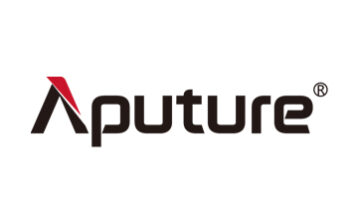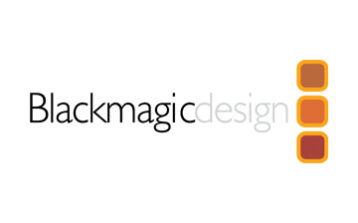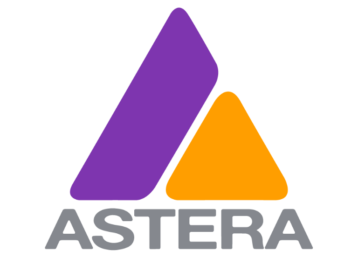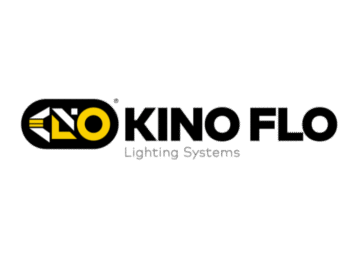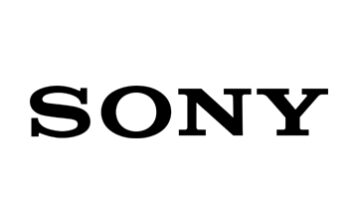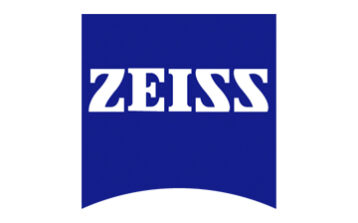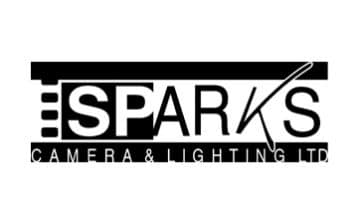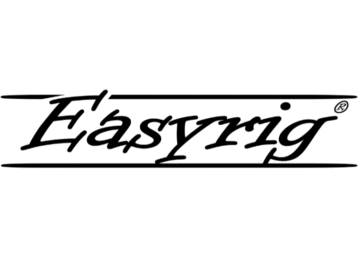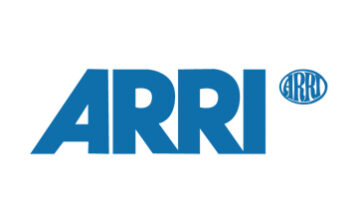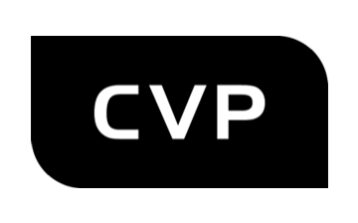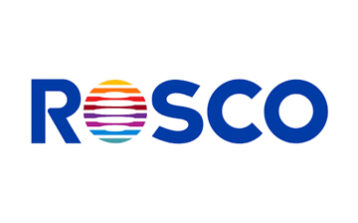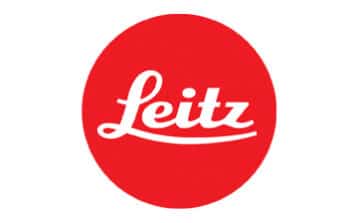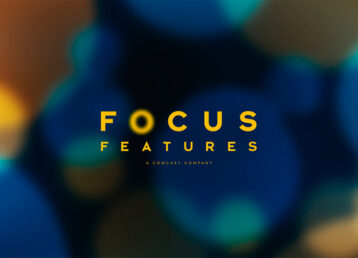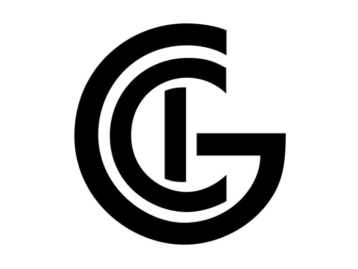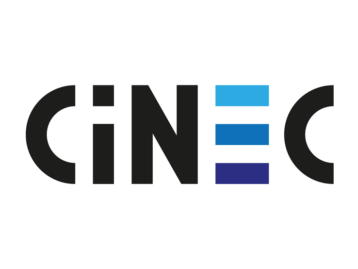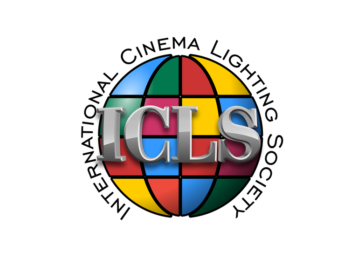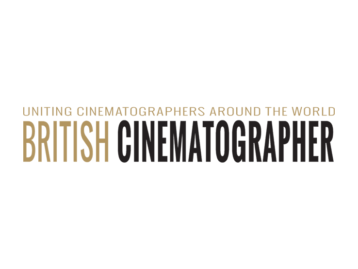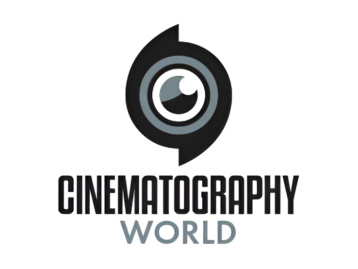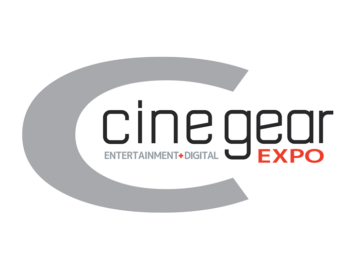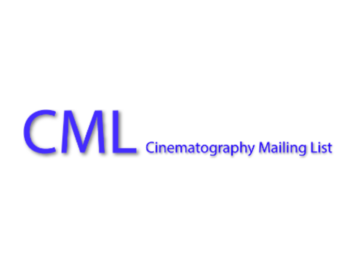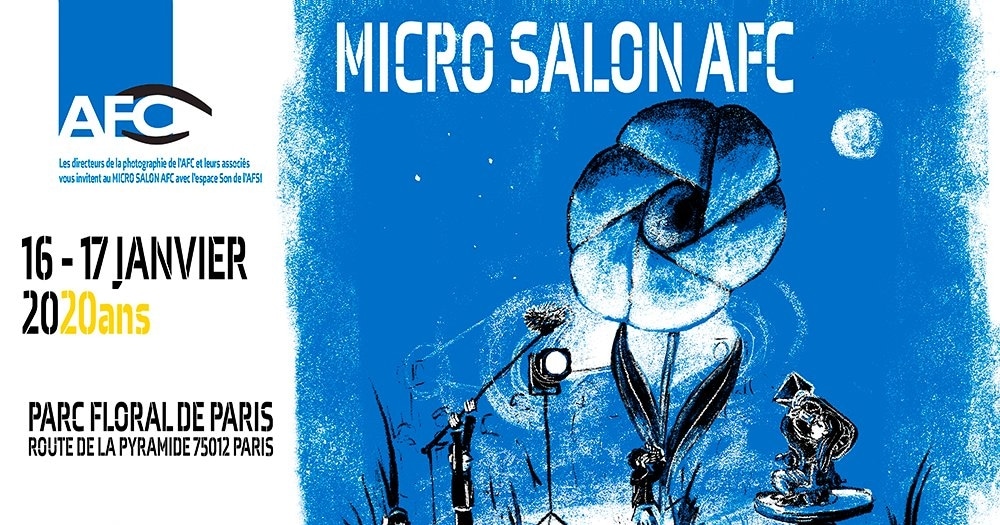
January 16th – 17th it was again time for the Micro Salon Paris! The legendary film school La Fémis has been the home turf for the Micro Salon since its beginnings, but last year the AFC, who arrange the show, were obliged to find another option in a hurry, because the film school building was deemed structurally unsafe for the serious amount of visitors who faithfully show up at the Micro Salon every year.
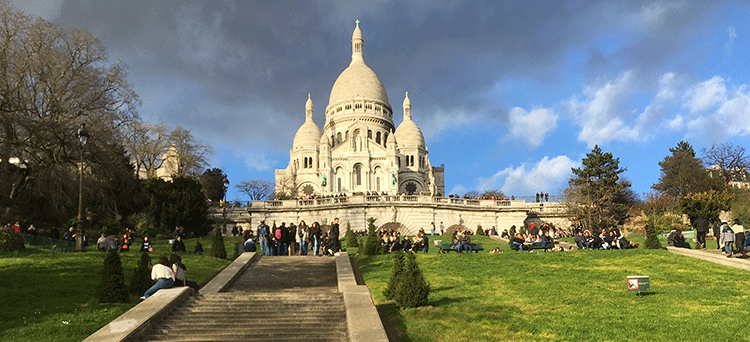 And now, in 2020 – and fittingly enough for the 20th time since the début in 2001- this wonderful trade show was held in the Paris borough of Vincennes, at the Parc Floral de Paris.
And now, in 2020 – and fittingly enough for the 20th time since the début in 2001- this wonderful trade show was held in the Paris borough of Vincennes, at the Parc Floral de Paris.
Arriving from Charles De Gaulle Airport, you first take a commuting train and then switch to the subway’s Line One. Why is this worth mentioning? It’s because the arrangers of Micro Salon have had an extraordinary combination of bad and good luck when picking the dates for the show. Bad, because there’s a massive strike among the train employees, crippling 90% of the subway system. And good luck – because Line One, being fully automated, is the only one that still runs the way it should! Vincennes is also a nice and quiet part of Paris and most of us are staying at various hotels here. People are very friendly and talkative and they will find time to help out a lost foreigner.
One thought about the French though. The Port de Vincennes subway station is so elegantly designed as to be almost camouflaged(!) for the uninitiated. There’s a huge stylized glass M easily mistaken for public artwork, beneath which the entrance to the subway is hidden. If you know what the subway station looks like, you have no problem finding it – f you don’t, you could be standing next to it and not find it.
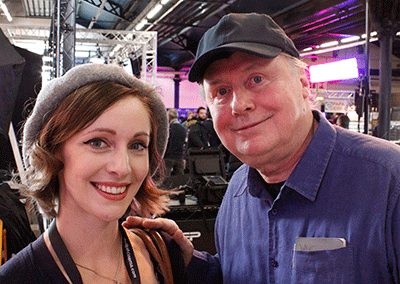 |
| DoP Ehran Edwards and Benjamin Bergery |
The Parc Floral de Paris is also a great choice for hosting the Microsalon. The park offers wonderful surroundings, and once you’ve entered it, artificial grass-covered hills guarantee a mild acoustic milieu which wholly belies the fact that were right smack in the middle of one of the busiest cities in the world. The exposition building is roughly the same size as the Battersea Park Expo where the BSC hold their annual trade show – only the Microsalon isn’t nearly as crowded as the BSC Expo tends to be. This is of course a great advantage, you can stroll easily through the exposition without having to fight your way through a throng of people.
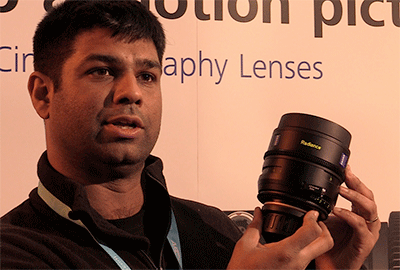 |
| Sundeep Reddy with Zeiss Radiance Prime |
Almost immediately upon entering the exhibition, I find Sundeep Reddy at the Zeiss booth and we strike up a conversation. ”The Micro Salon is really a global, international show,” Sundeep offers, “and it sort of kicks off the year after the Christmas holidays, so it’s great to catch up with everybody. France is a very important market for Zeiss. The various seminars arranged by the AFC is an additional advantage to the Micro Salon. So it’s not just a trade show, but it educates the visitors as well.”
So what’s the rationale behind the selection of products in the Zeiss booth this year? ”A lot of rental companies have requested Supreme Prime with more pronounced flare characteristics,” he explains, ”so our solution to this is a new Supreme Prime Radiance range of lenses.”
One of these lenses is mounted on a camera in the booth, and as Sundeep pans the camera across a light source, the beautiful flare characteristics of the lens are evident. Rounding off our conversation, Sundeep points to another set of lenses. ”We also have the new compact CP3 lenses, they’re lightweight and very popular and fast to boot: in the T2,9 – T2,1 range.”
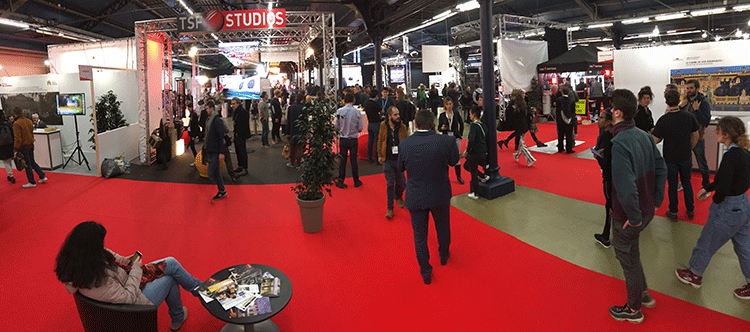
Enlightened by this demonstration, I decide to stroll around the exhibition some more, and have the good fortune of running into no less than two IMAGO presidents; Nigel Walters and Paul-René Roestad.
Roestad has recently announced his decision to resign as President of IMAGO after five highly productive years. Many of us were saddened and surprised to learn that he had reached this decision, and many letters from international cinematographers’ societies expressing admiration and gratitude have come pouring in steadily during the past few days.
But right now Paul-René has time for a couple of quick questions and I’m curious to hear his feelings on how the shifting production landscape is affecting the members in the various societies, now with episodic television becoming an ever increasing factor in their professional lives.
”There are many new challenges here,” Roestad offers, ”pre-production time can be uncomfortably short, the finished script can sometimes arrive very late in the process and in addition to that several cinematographers relieve each other in what basically amounts to shift work, shooting a few episodes each. To preserve a cinematic vision under those circumstances can be quite a feat.”
 |
| IMAGO president Paul-René Roestad FNF |
I’m also curious what Paul-René Roestad wants to focus on, now that his tenure of untiring work for the greater good of cinematographers everywhere reaches its end, and he reveals that he is in the middle of a documentary on the Norwegian fishing industry. To the Norwegian nation, the fishing industry far exceeds being a mere business. Norway is such a geographically outstretched country, that fishing not only provides food on the table for hundreds of thousands of citizens -the activity is also crucial to ”bonding” the infrastructure and the various far apart communities together. It sounds like a riveting documentary, one that I for one can’t wait to watch when it hits the screens!
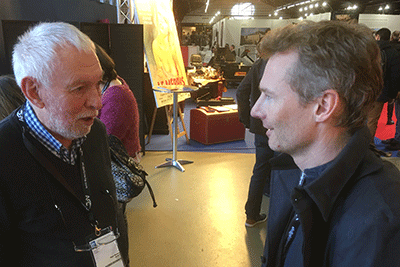 |
| Former IMAGO president Nigel Walters BSC and Malte Udsen DFF |
Roestad’s predecessor as IMAGO president, Nigel Walters, apart from having a seemingly endless array of wonderful stories, also knows absolutely everyone there is to know in the business. He is therefore a fantastic resource for introductions to people you may want to talk to.
As a case in point, Nigel introduces me to Jeff Lawrence, president of Ronford Baker, and we sit down for a chat next to the small forrest of tripod legs in the Ronford booth. Ronford are of course famous for their tripods, fluid heads and sliders, but it turns out there’s a lot more of fascinating back story to this company.
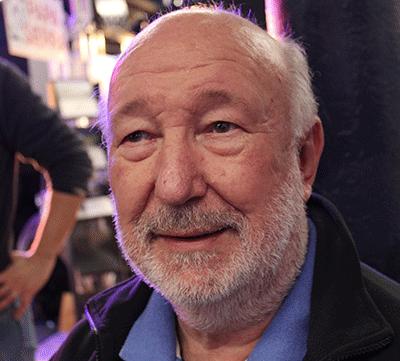 |
| Jeff Lawrence, president of Ronford Baker |
”Ronford Baker was actually founded by two men named Ron Ford and Harry Baker”, Jeff explains. ”Harry was the one who recruited me when I was fresh out of engineering school. Ron and Harry originally focused on repairing and servicing Arri cameras, since there wasn’t any service available in the UK at that time”, Jeff remembers. “A lot of fluid heads came their way as well, and these were frequently leaking and acting up, so Ron and Harry decided to construct a fluid head of their own, and the result was the Oscar winning F-15, the first variable fluid head.
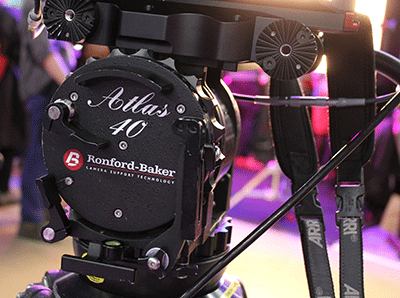 |
| The Ronford Atlas 40 fluid head |
Today our best selling product by far is tripods, we sell more tripods than any other product.
The Ronford metal tripod legs were developed in 1973 for Stanley Kubrick’s ‘Barry Lyndon’, it was all wooden tripods up until that point and these were the first with stainless steel legs.”
The Ronford fluid heads have evolved over the years into the Atlas 40, which is a heavy duty fluid head with strong counter balance, the type of head you want with big 35mm cameras with 1000 foot mags. You could put even heavier cameras on it, but the counter balance will give in.
The L-shaped Ronford fluid 7 was designed for the Éclair 16mm NPR camera, which was an unusually tall camera. Jeff continues, ”the idea with the L-head was to place the center of the camera’s mass near the tilt pivot point -then you don’t need a counterbalance. We still make the F-7 head and it’s our most popular fluid head. The drawback of course with the F-7 is if you want to reconfigure it you need Allen keys and you need to undo about thirteen bolts and by
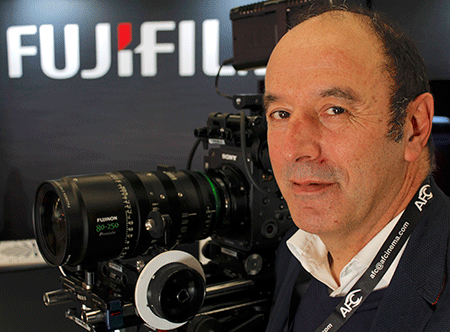 |
| Eddie Meijer, Fujifilm, with new Premista zoom |
that point the DoP is losing his patience. So the answer to that problem is the Atlas-7 which you can adjust very quickly, it’s all thumbscrews and you can configure it in no time. A lot of people in the UK use the Atlas-7 as a roll-over unit.
Another very popular product which we manufacture are sliders and our bigger versions are available motorized with motion control capacity.”
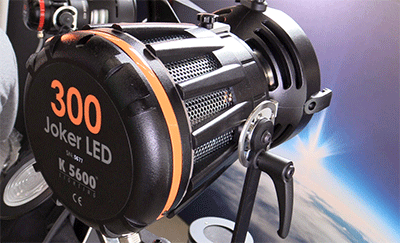 |
| New LED bi-colour Joker from K5600 |
Just enough time for a quick chat with two more people now. Eddie Meijer, Manager of TV and Cine lenses, at the Fujifilm booth explains that Fujifilm France have always made sure to be present at the Micro Salon Paris to get in close contact with the rental houses and also the end users. He points to some of the product on display in Fujifilm’s generous booth, ”we have two new large format zoom lenses, a 28-100 mm and a 80-250 mm, both are T 2,9.”
The products which K5600 are showcasing at the Micro Salon this year, Julien Bernard, Attaché Commercial at K5600, explains to me is a new series of LED luminaires, particularly a new Joker LED bi-colour fixture. DoPs and Gaffers are the specific end users which K5600 feel it’s especially important to get in touch with at the Micro Salon. The company will let them borrow their products to try them out and give feedback what they like and also what can be improved in the design, etc. Having launched a series of LED fixtures is a new departure for K5600 but they have stuck to their proven formula of compactness, versatility and robust, lightweight construction. The products are designed with the end user in mind -but at the same time they have to be strong enough to survive in the tough rental milieu.
Lars Pettersson
